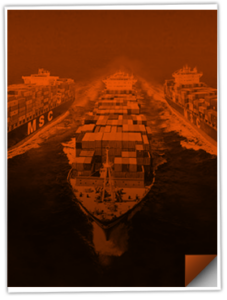Featured Headlines:
Nicaragua Is Swimming in Hot Water
Nicaragua Is Swimming in Hot Water
- On Monday, October 24th, President Biden issued an Executive Order (EO) to tighten US sanctions on Nicaragua—which were originally imposed in 2018—in the wake of the increasingly heightened tensions in the country.
- Officials have weighed the possibility of blocking imports from Nicaragua; though no such embargo has yet to be announced, the EO does open the door for additional restrictions in the future.
- The announcement also failed to mention Nicaragua’s free trade agreement (FTA) eligibility; however, it did state that the administration might review Nicaragua’s participation in CAFTA-DR.
- Click here to read the full EO on Taking Additional Steps to Address the National Emergency with Respect to the Situation in Nicaragua—which outlines the newly prohibited actions affecting the trade community at this time.
- Click here to view the official Federal Register Notice.
Let's Get Fiscal, Y'all!
- Did you know that U.S. Customs and Border Protection (CBP) publishes a list of enforcement statistics at the end of each fiscal year—which runs from October 1 through September 30—that includes a detailed breakdown of the actions taken by the agency?
- On October 21st, CBP released the Enforcement Statistics for Fiscal Year 2022; and some of the notable highlights included:
- The total number of enforcement actions, including the Office of Field of Operations Total Encounters and U.S. Border Patrol Trade Encounters, rose from 1,956,519 in 2021 to 2,766,582 in 2022.
- The total number of drug seizures this year measured 10,435 lbs. And, for those of you interested, this included a whopping 4,717 lbs. of methamphetamines and 3,585 lbs. of marijuana, respectively.
- The total amount of currency seized in 2022 was $591,651—a marked decrease from the $1,429,519 seized last year.
- So, if we’ve piqued the interests of any of you Newton lovers out there—whether you’re a fan of weights/measurements, Figs, or just have an obsession for anything Grease! related—we encourage you to visit CBP’s website to learn more about the annual enforcement statistics!
The Truck Stops Here
- Like a virus rampaging from coast to hinterland, so moves US cargo congestion—moving steadily from seaports to intermodal rail gateways, distribution centers, and warehouses of all sizes. Wait, it is WAY too soon to be using virus metaphors…our sincerest apologies!
- Despite the clogging, clutter, dysfunction, and delays, spot trucking market rates are falling quickly, putting pressure on contract rates. But hey, we just said the same thing about ocean freight two months ago!
- In September, all-inclusive spot full truckload (FTL) rates paid by shippers were down about 15% year-over-year (YoY), with the weighted national average falling to $2.65 per mile. For context, that average rate was still 35% higher than it was in September 2019.
- In response, contract FTL rates dropped 6% on average from their peak in June through September and have fallen further in October, with the average rate reaching $2.99 per mile. We asked a trucking industry pundit to comment on the relative value of trucking contracts vs. steamship contracts, but she simply said, “no.”
- Peeking at size-challenged shipments, less-than-truckload (LTL) costs have dropped 8.4% in the last 3 ½ months. This is interesting because—due to this mode’s Napoleon complex—it had tenaciously held onto higher rate levels longer than any other trucking mode.
- Nearly 30 LTL carriers, freight brokers, third-party logistics providers (3PLs), and technology providers are adopting a standardized electronic bill of lading (BOL) developed by the Digital LTL Council of the National Motor Freight Traffic Association (NMFTA). In the works since 2019, this electronic document is designed to replace paper BOLs and to help LTL carriers plan freight flow more efficiently.
Ocean Pacific Mari-Times
- Ten percent, five times over…
- Total Transpacific capacity sits at almost exactly 10% higher than demand today.
- Asia-US containerized imports declined 10% YoY in September.
- Rolling Covid-lockdowns in China are depressing; and they depress potential production by about 10%.
- The current average carrier load-factors for all US trade lanes maxes out at 90%, or 10% empty.
- And, in other news, 10% is slightly more than 9%.
- September’s YoY decline was the first since December 2021; but the real story is the 16% capacity increase YoY—we estimate that the trade is oversupplied by about 75,000 TEUs a week (or the typical capacity of about six service strings).
- So, gentle scholars, there is no real mystery to the tumbling ocean spot rates the last several months. The pace of the tumble, however, is certainly flattening, as US East Coast (USEC) rates have slipped about $300 per week in October, after falling almost $500 per week in September. In a recent re-negotiation of a contract, an unidentified steamship executive said, “I’ll tumble for ya! I’ll tumble for ya! I’ll tumble for you!”
- The Coast with the Most…. Congestion! The USEC’s three busiest ports now have a combined 50 vessels at anchor, which leads the pack; the US Gulf, ever ambitious for a silver medal, sits at 22 vessels (Houston…you have a problem); and the lowly USWC is limping into the competition with a meager 17 boats waiting to unload precious cargo. Yes, West Coast, we know your potential!
- Speaking of the West Coast, only Oakland and Seattle/Tacoma have trended up in the number of vessels at anchor over the last 3 weeks, though the trend is expected to be short-lived and largely inconsequential for US shippers.
- By mid-November, ocean spot rates from base ports in China to base ports in the US are expected to sink to $1600 per 40’ to the USWC and $5000 per 40’ to the USEC. (The bargains are out there, shoppers!)
- No report is complete without a discussion of “blanking” blank sailings…October trends are very odd because the rate of blanking was 67% lower for the last two weeks of the month versus the first two (in part due to the China National Day celebration). More specifically, ocean carriers blanked about 42% of supply in early October and have “down-shifted” to 14% in the final weeks.
- It stands to reason that we will see more blank sailings in November and December, though announced supply curtailments sit at only 10% for early November. Can you say, “winter deployment programs?”
Should We Call it Snail Rail?
- Our intelligent readers already know that US rail transits and average train speeds have reached new highs and new lows—and not in the good ways. From delays at seaport loading centers to a chassis crisis in the hinterland to rail-specific equipment shortages across their networks, US railroads should expect coal in their stockings this December. In fact, we half-expected them to rebrand as “snail rail.”
- Let’s take a closer look at today’s intermodal rail picture: IT SUCKS. (Just kidding!)
- In reality, intermodal rail service has greatly improved as demand has fallen, with the BNSF Railway and Union Pacific (UP) Railroad reporting that more than 70% of their trains arrived on time or less than 24 hours late over the last four weeks. For context, this compares to some reports of on-time performance falling below 20% in June.
- According to the Intermodal Association of North America (IANA), domestic intermodal volume declined 10% between March and September, while international volume fell 3.4% between April and September. Keeping our eye on more recent trends, the combination of international and domestic rail cargo traffic is down 2% in the last four weeks alone.
- In Q3, UP Railroad called out a slip of 16% in parcel traffic. For those of us looking for all the ways in which the sky is falling, this is clearly the final sign of the coming economic apocalypse…I mean PARCEL shipping in decline?! Yikes!
- What could slow our railroads faster than an avalanche covering the tracks…? A strike, that’s what! We’ll be slower than snail rail (and mail) if rail workers walk.
- UP Railroad’s CEO is “confident” that US Class I railroads will be able to avoid a strike next month, despite the country’s third-largest rail union voting against a tentative agreement brokered in mid-September by the Biden administration.
- The two largest unions—the Brotherhood of Locomotive Engineers and Trainmen (BLET) and the Sheet Metal, Air, Rail and Transportation Workers – Transportation Division (SMART-TD)—are still voting; with results expected to be announced on November 17th.



